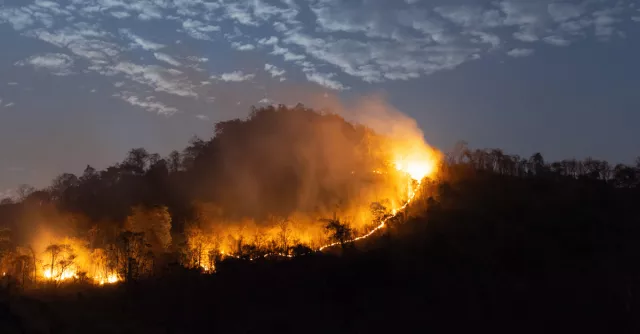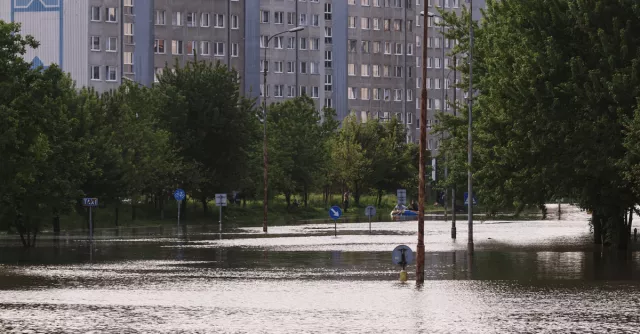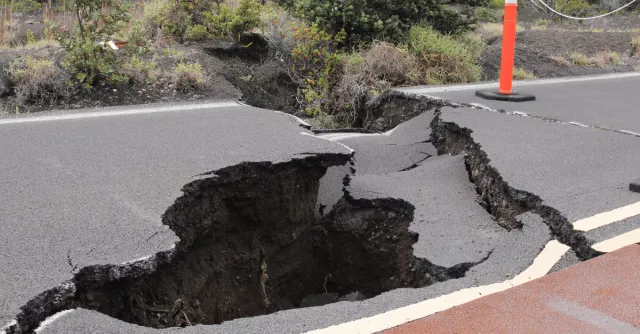Predictions & Preparation for the 2023 Wildfire Season

As businesses prepare for the upcoming season, it is essential that they develop strategies to protect their operations from potential disasters. In this article, we will discuss the current state of wildfire season in the US, how climate change could influence conditions in 2023, predictions for the 2023 season by region, and strategies to mitigate potential damages. By taking these preventative measures and developing business continuity and disaster recovery plans, businesses can ensure they are ready to respond quickly and effectively should an incident occur.
Overview of the Current State of Wildfire Season in the US
Wildfires have been occurring in the United States for centuries, and their impact continues to be felt today. Over the past decade, there has been an increase in the number of wildfires across the country. Wildfires occur seasonally, with peak months being from April to October. They can be classified into two categories — human-caused and natural — based on their cause.
Various factors such as weather, terrain, and fuel availability determine the severity of a wildfire. In recent years, climate change has caused an increase in temperatures and drought conditions throughout the US, leading to larger and more complex fires than ever before. The resulting destruction can be catastrophic for both local communities and businesses alike.
To better understand what is causing these increased risks, it’s important to look at the causes of wildfires in more detail. Human-caused fires are typically sparked by careless activities such as campfires left unattended or arson attacks. Natural fires are usually caused by lightning strikes that ignite dry materials like grasses or woody debris.
On top of these sources of ignition, other factors can contribute to why a fire may spread quickly or become difficult to control. These include:
- Wind speed and direction
- Temperature
- Relative humidity
- Fuel type
- Fuel load (quantity)
- Fuel moisture content (how wet or dry)
- Topography (such as hillsides)
- Soil type
- Land cover
- Weather conditions such as lightening storms
- Human activity (such as prescribed burning)
- Air quality index
- Firefighting resources available
- Population density near a potential fire zone
It’s clear that when all these variables come together during wildfire season they can create very dangerous situations that require quick action from businesses in order to protect their operations from damages due to fire incidents. As we approach 2023’s wildfire season, businesses must take every measure necessary to prepare for any potential disasters that may arise.
Potential Impacts of Climate Change on Wildfire Season in 2023
As the world continues to warm, wildfires are becoming larger and more frequent. The 2023 wildfire season is expected to be one of the most unpredictable yet, with higher temperatures and drier fuel sources putting businesses at a greater risk.
Climate change has already led to an increase in average temperatures across many regions, which can result in longer wildfire seasons and an increased risk of lightning-caused fires. Warmer temperatures also lead to earlier snow melt and decreased water availability, meaning there is less available moisture for plants and trees that could serve as fuel for a fire. Additionally, drought conditions caused by climate change can reduce soil moisture levels, leaving plants more vulnerable to burning quickly.
The increased risk of wildfires during the upcoming season means that businesses must act now to prepare for potential incidents. Preparations should include:
- Creating defensible space around the premises
- Developing business continuity and disaster recovery plans
- Staying informed of local fire danger and weather conditions
- Being aware of high-risk areas where fires may spread quickly
- Preparing emergency contact lists
- Training staff on evacuation procedures
- Identifying potential safety hazards near your business premises
- Keeping up with news reports about regional fire activity
- Investing in insurance coverage against wildfire damage
- Stocking up on supplies such as food, water, flashlights, first aid kits, etc.
- Having a communication plan in place if needed
- Testing smoke alarms regularly
It is important that businesses take the necessary steps now to protect their operations from potential wildfire incidents. Taking proactive measures can help ensure your business is better prepared for whatever Mother Nature throws its way during the 2023 wildfire season.
Predictions for the 2023 Wildfire Season by Region
As the 2023 wildfire season approaches, businesses across the United States must prepare for any potential danger that may arise due to an increase in temperatures and dry fuel sources.
Southwest
In particular, the Southwest region is expecting a particularly vulnerable season as drought conditions worsen and vegetation becomes highly combustible. Businesses can take precautionary measures such as creating defensible space around their buildings and removing dead plant material from their property.
Southeast
The Southeast region is also prone to increased fire activity as warmer-than-usual temperatures combined with ongoing drought conditions could spark lightning-caused fires or human-caused blazes due to careless outdoor activities. Business owners should stay informed on local fire danger levels and any burn bans that may in place before conducting any potentially hazardous activities.
Pacific Northwest
Meanwhile, the Pacific Northwest is expected to experience moderate fire activity throughout the 2023 season thanks to a weather system bringing cooler temperatures along with higher humidity levels accompanied by normal precipitation totals. Despite this, hot spots within certain areas could still exist due to dryness year-round, so companies should take proactive steps such as clearing dead vegetation from near buildings or installing sprinkler systems.
Overall, it’s essential for businesses operating within high-risk areas for wildfires to remain informed of current fire danger levels, weather forecasts and drought conditions throughout the wildfire season so they can adequately prepare for whatever lies ahead during what appears will be an unpredictable 2023 wildfire season. By taking protective precautions now like setting up defensible spaces or investing in sprinkler systems businesses can help safeguard themselves against any potential threat posed by rapidly spreading fires fueled by windy conditions or extreme heat and low humidity levels.
Strategies to Prepare for Wildfires and Mitigate Potential Damages
As 2023 wildfire season approaches, businesses must take steps to ensure they are fully prepared. This includes being aware of local fire danger levels and weather conditions, creating defensible spaces around buildings, and checking for fire bans, burn permits and air quality alerts. It is also critical to have an evacuation plan in place that has been regularly practiced as well as a business continuity plan (BCP) that outlines strategies such as remote working capabilities or relocating operations temporarily. By taking these proactive measures beforehand, businesses can safeguard their personnel and operations from the risks associated with wildfires. Increase confidence in your organization's plan with regular business continuity testing.
Steps to Respond and Recover from an Incident with Business Continuity and Disaster Recovery Plans
As the 2023 wildfire season approaches, businesses must be prepared to respond and recover from any potential incidents. To do this, they should review their existing business continuity and disaster recovery plans and identify areas that may need updating or improvement. They should also create a communication plan to ensure employees and stakeholders are informed of any necessary changes in operations due to wildfire threats.
Businesses should also take steps to ensure necessary supplies are on hand in case of an emergency, such as fire extinguishers, first-aid kits, flashlights, water and food supplies, protective gear for personnel, and other resources that may be needed during an incident. Additionally, businesses should develop a recovery plan to return operations back to normal after an incident has been resolved. This could include contacting contractors for assistance with repairs or cleanup services if needed.
It is essential for businesses to stay informed of local fire danger levels, weather forecasts, and drought conditions so they can adequately prepare for the 2023 wildfire season. Taking proactive steps now can help safeguard personnel and operations from the risks associated with wildfires. Reach out to us today to review your existing business continuity and disaster recovery plans and make any necessary updates or improvements and ensure your organization is prepared for any potential incidents.



